Chronological Guide to Marvel Movie Sequencing
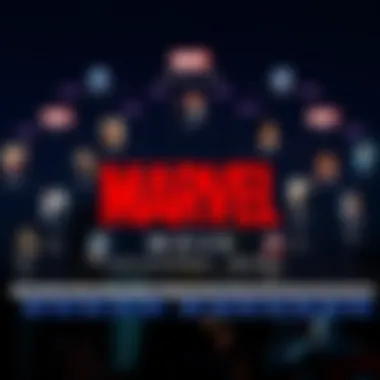
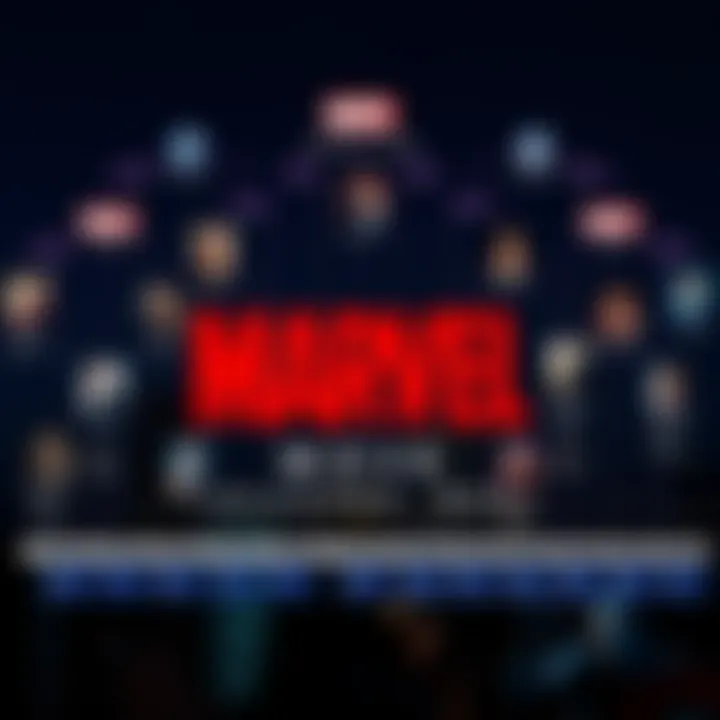
Intro
The Marvel Cinematic Universe (MCU) has shaped modern cinema and redefined the superhero genre since it burst onto the scene over a decade ago. The storyline extends across a plethora of characters, each contributing to a rich tapestry that intertwines over multiple films. It's akin to a play where each act builds upon the last, creating anticipation and interlocking narratives that keep audiences on the edge of their seats. This article seeks to guide the reader, whether they are new to this cinematic journey or have been a long-time fan, through the chronological sequence of Marvel movies. It will stress key plot points, character developments, and thematic elements that have resonated with so many.
Throughout this article, we will traverse through the meticulously crafted timelines, examining why each installment matters and how they collectively contribute to the expansive universe. With a focus on the impact of individual films against the backdrop of a larger narrative, readers will gain an appreciation for both the storytelling and filmmaking behind the Marvel brand.
Ultimately, this comprehensive guide is about understanding not just what happens in each movie, but why it matters—delving into the heart of the Marvel phenomenon. This exploration is not only for the die-hard enthusiasts but also for those venturing into the MCU for the very first time. Together, let's embark on this cinematic exploration.
Prelims to the Marvel Cinematic Universe
The Marvel Cinematic Universe (MCU) has become a significant phenomenon in the film industry, attracting audiences worldwide with its intricate storytelling and complex characters. Understanding the MCU is essential for appreciating how these films connect, both in terms of plot and character development. This section sets the stage for a deeper exploration of the Marvel movies, serving as a gateway to the impressive narrative tapestry woven throughout the series.
The MCU’s importance is underscored by its ability to redefine modern cinema. It blends genres, merges multiple storylines into a cohesive whole, and creates a universe that feels real yet fantastical. This is not just about entertainment; it’s about the cultural impact these films have made in society. From the heroic to the human, they resonate with the audience on many levels, often reflecting contemporary themes and issues.
Defining the Marvel Cinematic Universe
So, what exactly is the Marvel Cinematic Universe? Simply put, it's a series of superhero films produced by Marvel Studios based on characters from American comic books published by Marvel Comics. The MCU is unique in its interconnectedness: each film is a part of a larger narrative that develops over phases, culminating in crossover events that feature numerous characters from different storylines.
To really grasp the essence of the MCU, we should look at its characteristics:
- Interconnected Storytelling: Every film contributes to an overarching plot, creating a sense of anticipation and continuity.
- Character Arcs: Characters evolve through their experiences, facing challenges, personal growth, and often, moral dilemmas.
- Phases: The MCU is divided into phases, each with its own thematic explorations and pivotal storylines, making it easier for viewers to navigate and appreciate the progression.
This continuity and depth have turned die-hard comic book fans into movie aficionados, while also capturing the hearts of newcomers, elevating the MCU beyond typical film franchises.
The Evolution of Marvel Films
The evolution of Marvel films has a story of its own, worthy of examination. The MCU began with "Iron Man" in 2008, which not only laid the foundation for the franchise but also introduced audiences to a new era of superhero films. At the time, Marvel Studios was still a fledgling entity, lacking the resources and visibility of major competitors. Yet, it struck gold with Robert Downey Jr. playing Tony Stark, who embodied the charm and flaws of a modern hero.
What followed was an expanding roster of films that showcased various characters, each unique in their own right—from Thor, the god of thunder with his mythological roots, to the street-smart Peter Parker in "Spider-Man: Homecoming". Each entry into the MCU pushed the boundaries of storytelling, visual effects, and audience engagement.
To summarize the evolution:
- Diverse Genres: Initially characterized by a superhero-centric focus, the films began to integrate different genres—spying elements in "Captain America: The Winter Soldier", humor in "Guardians of the Galaxy", and horror aspects with "Doctor Strange".
- Increased Ambition: As their popularity soared, so did the complexity of their plots. Marvel ventured into darker and more intricate narratives, culminating in epic sagas like "Avengers: Infinity War" and "Avengers: Endgame".
- Cultural Relevance: The films began reflecting social issues, such as identity, legacy, and representation; showcasing characters of diverse backgrounds and their unique stories.
The Foundation of Marvel Movies
The Marvel Cinematic Universe (MCU) has become a cornerstone of modern cinema, reinventing how superhero stories are told and consumed. The foundation of Marvel movies is crucial in understanding this expansive universe, as it sets the stage for characters, themes, and the overarching narrative that has captivated millions. This section highlights the formative elements that shaped the MCU and underscores their significance to the ultimately interconnected storytelling.
First and foremost, Iron Man is regarded as the launchpad of the Marvel Cinematic Universe. Released in 2008, this film did more than just introduce audiences to Tony Stark; it established a new standard for superhero flicks, combining character depth with thrilling action and sharp wit. Robert Downey Jr.'s portrayal of Stark was not just about a man in a suit; it delved into the psyche of a flawed genius grappling with his own demons. It was a perfect blend of humor and drama, one that would influence the tone of future movies.
Another essential element is the casting choices, which have created dynamic and memorable character portrayals. Each actor brings their own flavor, adding layers to the narrative. Take, for example, the compelling chemistry between characters like Tony Stark and Pepper Potts or the camaraderie among the Avengers. Such relationships form the emotional backbone as the plot unfolds, shaping viewer engagement.
Additionally, the post-credit scenes are worth discussing. What once was a mere extra after the credits has now evolved into a hallmark of MCU storytelling. These brief segments not only tease future installments but also reward avid fans for their patience, creating buzz and anticipation around upcoming films.
Iron Man: The Inception
The inception of Marvel movies primarily revolves around Iron Man. Unlike typical superhero origin stories, Iron Man offered a fresh perspective, focusing more on character development over a hefty backstory. Tony Stark, an eccentric billionaire and genius inventor, is thrust into the world of heroism primarily out of necessity rather than altruism. When he is captured by terrorists and experiences the consequences of his own arms manufacturing, it ignites his journey to justice and self-discovery.
Much can be said about the film’s iconic line delivered by Stark: "I am Iron Man." This phrase encapsulates his evolution from a self-centered industrialist to a hero embracing responsibility for his actions. The technology within the film is not just futuristic gadgetry but a sentiment of human ingenuity. The intricacies of the Iron Man suit, from its creation to its significant upgrades, reflect Stark's character arc, marrying technological marvels with personal growth.
In many aspects, Iron Man mirrors societal trends, especially through its depiction of innovation and the ethical quandaries surrounding technological advancements. The film also laid down the groundwork for critical themes that would echo throughout the MCU—leading with one’s values and the necessity of redemption.
The Hulk: Understanding the Antagonist
When considering the foundation of Marvel movies, The Hulk deserves a mention as it tackles the complexity of the antagonist in a way that challenges the typical perceptions of villainy. The 2008 film The Incredible Hulk takes a different route than its predecessor, diving deeper into the emotional struggles of Bruce Banner. Instead of a classic villain, the film explores Banner's internal conflict and transformation into the Hulk, which is often portrayed as a misunderstood creature rather than a mere monster.
Through Banner's character, audiences witness the juxtaposition of intellect and brute force, illustrating the often fine line between heroism and monstrosity. The Hulk stands as a metaphor for the darker facets of humanity, revealing how fear and anger can warp one's sense of self. This adds an intriguing layer to the MCU's narrative, presenting antagonism not as a straightforward element but as a personal struggle.
Understanding the Hulk's backstory also serves to highlight the importance of empathy in storytelling. Instead of demonizing Hulk's actions, the film urges viewers to consider the circumstances that lead to his rage, encouraging a deeper emotional connection between the character and the audience. This focus enriches the MCU with a more nuanced view on heroism, reminding us that each character contends with their own battles, both seen and unseen.
"Marvel movies are not just about the action; they're about understanding the characters we root for and the internal struggles they face."
Understanding this foundation allows viewers to appreciate the intricacies of the films and the meticulous planning that has gone into weaving this extensive tapestry known as the MCU. For more details, you can check out additional resources on Wikipedia or engage in discussions at Reddit.
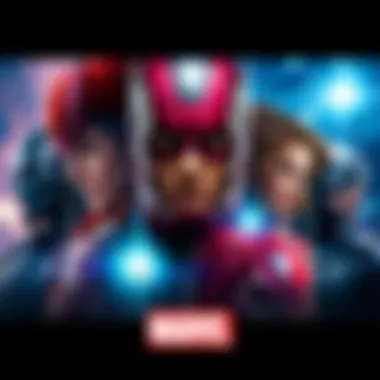
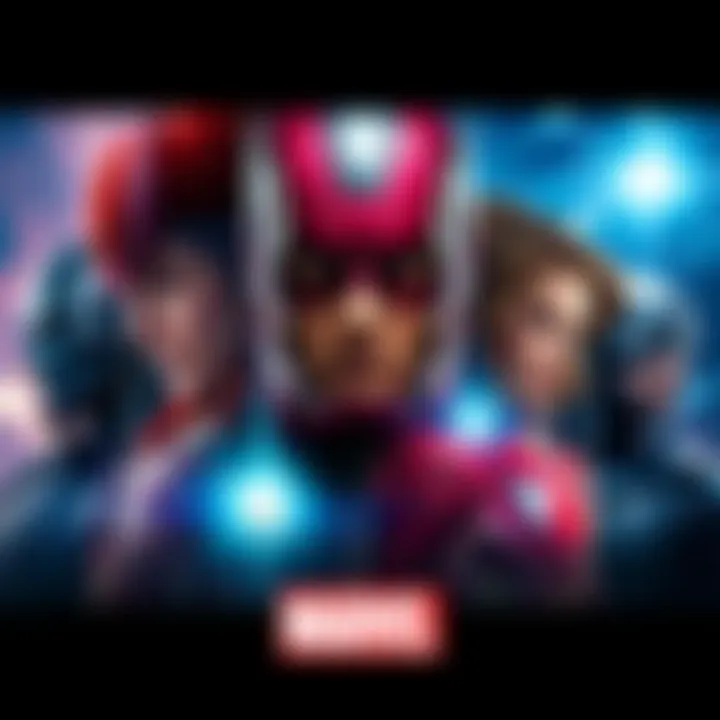
As we navigate through this universe, we continually uncover the layers that form its narrative fabric.
Expanding the Universe
The topic of Expanding the Universe in the Marvel Cinematic Universe (MCU) is crucial in understanding how the franchise developed from standalone films to a woven tapestry of interconnected stories. Each newly introduced character or myth adds depth to the current narrative structure, enhancing the viewer's experience. Rather than a linear storytelling approach, Marvel took a daring leap into a more cohesive universe. This interconnectedness enables fans to engage more profoundly with the characters while allowing for exciting new story arcs that keep audiences invested.
From introducing cosmic beings to exploring multi-dimensional realms, expanding the MCU has been about broadening horizons. Character arcs gain intricacy as they evolve with their surroundings, presenting rich narratives that challenge traditional superhero tropes. This structural expansion also speaks to the benefits of world-building in film, offering the audience an opportunity to revisit beloved characters and settings while also introducing fresh, innovative ideas.
"The beauty of the MCU is that it feels endless. Every story adds layers, creating room for unique perspectives and experiences that resonate across generations."
Thor: Myths and Legends
Released in 2011, Thor marked a pivotal moment in the MCU, as it ventured into the realm of mythology. Centering on the Norse god of thunder, the film deftly merges the elements of myth with contemporary storytelling. Asgard, with its sweeping vistas and grand architecture, promises the audience a visual feast, all while ensuring that Thor's character arc is front and center.
Delving into themes of honor, sacrifice, and redemption, this tale is more than just a superhero narrative; it's an exploration of what it means to be worthy. The interactions between Thor, Loki, and their father Odin set the stage for future conflicts and relationships, making it essential viewing. The film succeeds not only in laying the groundwork for Thor's journey but also in establishing the cosmic aspects that will define subsequent entries in the franchise.
This blend of familiar mythological figures and modern dilemmas resonates with fans, reminding them that heroes can emanate from various origins, transcending time and space.
Captain America: The First Avenger
Captain America: The First Avenger, released in 2011, marks another significant cornerstone in the MCU. This film doesn't just introduce a hero; it encapsulates the essence of patriotism during a tumultuous era. Set against the backdrop of World War II, The First Avenger paints a vivid picture of Steve Rogers's transformation from a frail soldier to the iconic Captain America. His journey embodies resilience and the fight for justice in a world rife with conflict.
The historical context is rich with authenticity, drawing parallels between Cap's personal battles and the larger fight against tyranny. The film also introduces critical figures, like Peggy Carter and Howard Stark, who will recur throughout the series, establishing a deeply interconnected narrative. These relationships provide emotional weight and context, allowing viewers to invest in both the character and his journey.
The significance of Captain America lies not only in its blend of action and emotion but also in demonstrating how the MCU can adeptly balance historical storytelling with superhero elements, serving as a template for later films to explore adventures across various timelines.
For anyone looking to delve deeper into these individual films and their profound influence within the larger scope of the Marvel Universe, you might consider checking out resources on Wikipedia, or platforms like Reddit for fan discussions. Understanding the intricacies of the storytelling and character development can greatly enhance one’s appreciation of the remarkable narrative architecture that is the MCU.
The Formation of the Avengers
Establishing the foundation of the Marvel Cinematic Universe hinges significantly on the emergence of the Avengers. This gathering marks a pivotal moment in the narrative, one where individual heroes unite for a common cause, showcasing both the power of teamwork and the complexities that arise from conflicting ideologies.
The formation is not just about assembling a team; it's the culmination of unfolding storylines that intertwine character motivations, personality clashes, and a looming threat that requires unprecedented collaboration. When audiences witness Iron Man, Captain America, Thor, and others coming together, it raises questions about unity versus individuality and what it means to work as a cohesive force. Additionally, this union lays the groundwork for subsequent films, amplifying emotional stakes and driving home the theme of camaraderie.
The Avengers: Coming Together
The 2012 film, The Avengers, acts as the linchpin for this narrative journey. We see characters from previous Marvel movies — each with their distinct arcs — converging to confront Loki and his alien army. Through witty banter and misunderstandings, these superheroes reveal their vulnerabilities and insecurities.
"We’re not a team. We’re a time bomb."
This quote encapsulates the tension within the group, highlighting how differences can both strengthen and fracture. Captain America represents leadership and moral integrity, while Iron Man embodies a more cavalier approach. Their initial friction drives the narrative forward, establishing a sense of realism where not everyone sees eye to eye, even when facing dire circumstances.
The assembly also draws in audiences with a dazzling display of visual effects, hyping up the action sequences. The climactic battle in New York serves as a testament to teamwork, each Avenger using their unique strengths to combat a shared enemy. The message resonates: while their powers are extraordinary, it's their camaraderie and trust that provide the real backbone to their efforts.
The Aftermath of Conflict
Post-battle, the ramifications of their collaboration unfold. In Avengers: Age of Ultron, the aftereffects of their initial encounter shape their relationships and the larger universe. Heroes grapple with public perception, personal demons, and the overwhelming fallout of their actions, which introduces the crucial theme of accountability.
The team is visibly altered; trust has been tested, and unintended consequences arise, like the destruction that accompanies their battles. These realities enhance viewers' connection to the characters, as they grapple with their own dilemmas about right, wrong, and what it means to stand united.
Moreover, the conflict leads to deeper individual arcs among team members. For instance, while Iron Man becomes increasingly aware of his failings and responsibility, Captain America's steadfast morals are challenged by the evolving nature of global threats. This introspection adds layers to the narrative fabric of the MCU, showcasing that the formation of the Avengers isn't merely about assembling for battle but navigating the real-life consequences of their existence as heroes.
Exploring how these themes resonated across the MCU reinforces the significance of this collective endeavor. It widens the narrative canvas, allowing for richer stories and deeper character developments in future films.
By analyzing the formation of the Avengers, one gains a clearer understanding of the challenges within the Marvel Cinematic Universe, as well as the intricate ties that bind its story threads together.
Phase Two: Deepening the Narrative
In the landscape of the Marvel Cinematic Universe, Phase Two marks a pivotal period where the storytelling deepens, broadening the emotional and thematic scope of the series. This phase, consisting of six films, seeks not just to entertain but to resonate with the audience on multiple levels, bringing forward character complexities and foreshadowing future conflicts. Here, the groundwork is laid for grander narratives, with each film contributing layers to the overarching saga. This section will outline the significance of these films, showcasing how they helped to enrich the narrative fabric of Marvel and prepared it for the larger eventful crossover that lies ahead.
Iron Man Three: Personal Stakes
Iron Man Three dives headfirst into the psychological aftermath of the Battle of New York, where Tony Stark is left grappling with anxiety and panic attacks. This film goes beyond the usual superhero tropes, showcasing a man wrestling with his vulnerabilities. His journey invites audiences to consider the human side of heroism. The stakes become remarkably personal as Tony faces the Mandarin, a villain who represents not just a physical threat but also an ideological one, challenging the very nature of Stark’s identity as Iron Man.
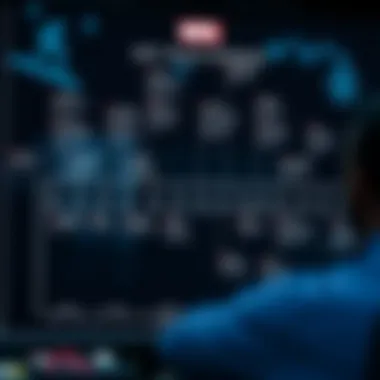
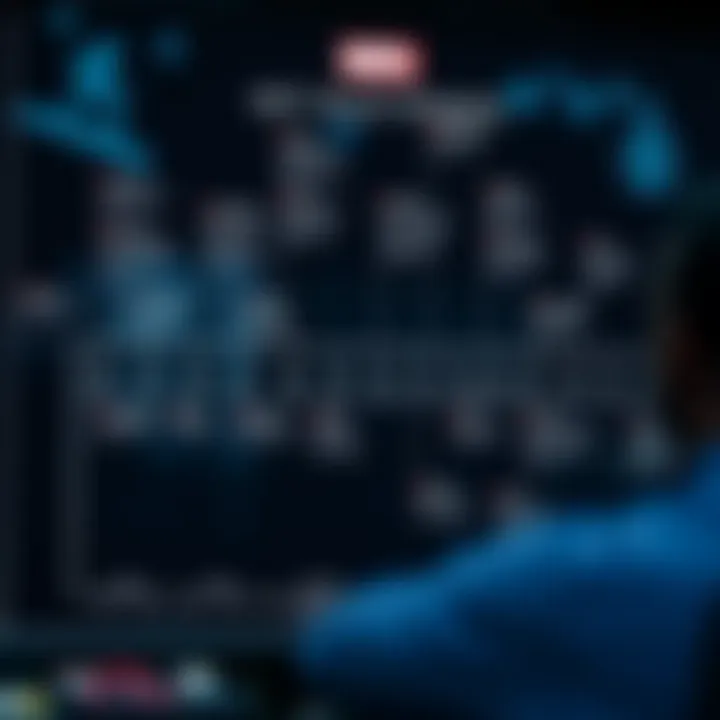
The relationship with Pepper Potts is explored further, illustrating how Tony's obsession with technology impacts those he loves, thus grounding the film's stakes in reality. By the end, it's not merely about the suit; it's about the man behind it. The thematic threads woven into this movie echo throughout the subsequent films, emphasizing the costs of living a life marked by heroism.
Thor: The Dark World: Cosmic Threats
In Thor: The Dark World, audiences are presented with a tale steeped in Norse mythology and cosmic horrors. Here, Thor faces a formidable new enemy, Malekith, who aims to engulf the universe in darkness. This film strikes a balance between the grandiose and the intimate, giving viewers a glimpse into the fragile alliances that are crucial within the Nine Realms. The stakes escalate as we see how these cosmic threats have tangible impacts on personal relationships, particularly between Thor and Loki.
With the Aether at play, the narrative plunges into notions of sacrifice, power, and the weight of legacy. Thor’s character arc evolves as he learns not only to fight but to unify. This film sets the stage for deeper cosmic elements that will re-emerge in later installments.
Captain America: The Winter Soldier: Intrigue and Conspiracy
Captain America: The Winter Soldier stands out as one of the most impactful films of Phase Two, blending superhero action with political thriller elements. This film introduces the idea of surveillance and the moral dilemmas surrounding it. Captain America, a symbol of liberty, is thrust into a world filled with duplicity, forcing him to question what he stands for. The introduction of the Winter Soldier, who turns out to be his old friend Bucky Barnes, recasts the stakes at a deeply personal level.
The conflict between S.H.I.E.L.D. and Hydra reveals a layered narrative of trust and betrayal. It challenges the very premise of heroism in a world where not everything is black and white. This film adds dark undertones to the MCU, showcasing not just physical battles but ideological ones that resonate with real-world implications.
Guardians of the Galaxy: A New Direction
With Guardians of the Galaxy, Marvel took a bold leap into the realm of cosmic adventure, introducing viewers to a ragtag team of misfits who challenge traditional heroism. This film is a departure from its predecessors, utilizing humor and heart to explore themes of redemption and family. Star-Lord, Gamora, Rocket, Drax, and Groot may seem like an unlikely bunch, but it's these very differences that form a strong emotional backbone for the film.
Their collective growth throughout the movie showcases that heroism is often found in the most unexpected places. The film’s infectious energy and humor do not overshadow its deeper themes but rather enhance them, showcasing how each character confronts their past while fighting for a common cause. This change in tone opens the MCU to various narrative styles that are richer and more diverse, setting a standard for future entries.
In Phase Two, Marvel began to thread intricate connections capable of luring the audience back for more, each film expertly crafted to build anticipation for the upcoming risks and rewards in the Cinematic Universe. The personal stakes, cosmic threats, intrigue, and a new direction all combine to deepen the narrative, making it not just a series of films but a rich tapestry of interconnected storytelling.
The Culmination of a Saga
The importance of understanding the culmination of the Marvel saga cannot be overstated. This phase represents the apex of a vast narrative universe, wherein multiple story arcs converge, characters face their ultimate trials, and resolutions begin to manifest. Viewed from a broader lens, it highlights the intricate storytelling that the Marvel Cinematic Universe (MCU) has honed over the years. It’s not merely about flashy superhero battles; it’s about the emotional journeys that accompany these epic confrontations.
As audiences, we witness the growth of heroes and their bonds over time. We see friendships tested, ideologies challenged, and legacies forged as the stakes rise to unprecedented heights. The culmination brings a certain sense of closure, yet it leaves room for new beginnings, paving the way for the next phase of storytelling.
Here, we delve into two pivotal movies that characterize the culmination phase, grappling with their themes and impacts.
Avengers: Age of Ultron: Unity at Risk
Avengers: Age of Ultron serves as a turning point in the MCU. Unlike its predecessor, which celebrated unity through teamwork and camaraderie, this film underscores the fragility of that unity. As the Avengers face Ultron, an artificial intelligence bent on human extinction, they confront not just a formidable foe but also the imperfections in their unity.
- Themes: The film explores themes like responsibility, distrust, and the consequences of creation. The Avengers are portrayed as flawed heroes, each grappling with their past and personal demons. Iron Man’s attempt to create a protective algorithm backfires, raising questions about technological reliance.
- Character Development: Viewers witness the evolution of relationships—Tony Stark's greater responsibility contrasted with Bruce Banner’s struggle with his inner monster. Scarlet Witch’s introduction adds another layer, as her powers manipulate the Avengers' fears and insecurities, leading to infighting.
“In their attempts to save the world, they inadvertently create a threat, illustrating the complexities of heroism.”
These intricate dynamics unveil the cracks in the Avengers' unity, leading to an extensive character arc which resonates with audiences, keeping tension alive until the very end.
Ant-Man: Expanding Horizons
Ant-Man emerges as a unique chapter within this phase, serving as a refreshing pause amidst the high-stakes environment of cosmic battles. While it may seem inconsequential at first glance, its significance lies in its ability to expand the narrative horizons and introduce new layers of storytelling.
- Themes: This film encapsulates themes of redemption and legacy, as Scott Lang navigates his role as a father and a hero. The idea that anyone, even a man of humble means, can become extraordinary resonates deeply in a universe filled with godlike beings.
- Character Dynamics: The mentorship between Hank Pym and Scott is particularly noteworthy. It reflects the tradition of passing the torch, pushing boundaries while highlighting the importance of choice in the journey to becoming a hero. The film also dabbles in humor, breaking the intense tone of prior movies, yet it remains grounded in its emotional core.
Through its distinct narrative style, Ant-Man not only broadens the scope of the MCU but also reaffirms the notion that each character adds value to the tapestry of storytelling, regardless of their scale of power.
In summary, the culmination phase is rich with explorations of character, moral ambiguity, and storytelling depth, setting the stage for future adventures while providing a satisfying narrative closure. It demonstrates that every hero's journey, when layered with complexities, becomes a part of something greater than themselves. Such a realization keeps fans engaged, anticipating what future installments may bring.
Phase Three: Convergence of Heroes
Phase Three of the Marvel Cinematic Universe represents a pivotal chapter in the saga, bringing together numerous characters and intertwining their destinies in ways that define both individual growth and collective narratives. It marks a deeper exploration into the consequences of heroic actions, moral philosophies, and the weight of legacy. This phase not only elevates the stakes but also showcases the rich tapestry of stories that unite the characters in their journey. Moreover, with each film building upon the others, viewers are invited to consider the underlying themes of responsibility and sacrifice. Let’s delve into each film that defines this monumental phase.
Captain America: Civil War: The Ideological Divide
"Captain America: Civil War" dissects the concept of accountability, a central theme within the superhero genre that often goes unaddressed. Here, a schism among the Avengers emerges as ideological differences surface, leading to a confrontation that has long-lasting implications. The differences pitch Team Iron Man, advocating for government oversight, against Team Captain America, who values personal freedom and autonomy. This division creates not just a rift among friends but serves as a reflection on societal norms about power and the ramifications of authority. The film’s climax, a battle fueled by personal conflicts and complex motivations, compels audiences to ponder their own views on leadership and moral responsibility.
Doctor Strange: The Power of Knowledge
In "Doctor Strange," audiences are introduced to a mystical element of the Marvel Universe, illuminating the importance of knowledge and perception. Stephen Strange's transformation from a self-absorbed neurosurgeon to the Sorcerer Supreme highlights a broader narrative: the pathways of learning and understanding can lead to profound change. Magic, in this context, serves more than just an aesthetic option; it embodies the various ways knowledge can alter realities. This film urges viewers to acknowledge that there are dimensions beyond the physical, the unseen forces that shape our lives. It’s not merely about gaining power, but understanding how to wield it.
Spider-Man: Homecoming: Legacy and Growth
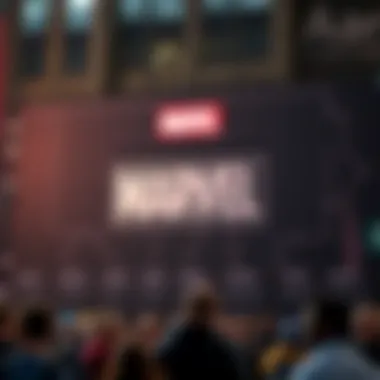
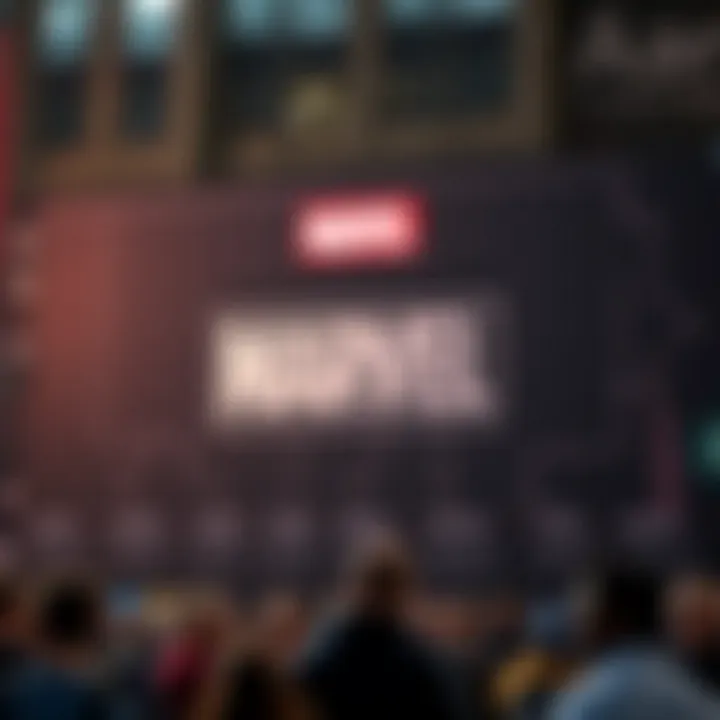
"Spider-Man: Homecoming" presents a young Peter Parker grappling with his newfound responsibilities while striving to carve out his own identity away from the shadow of more seasoned heroes. This film subtly addresses the legacy of mentorship, as Tony Stark's influence is both a blessing and a burden for Peter. The struggles he faces—balancing school, friendships, and superhero duties—resonate with any audience member who has ever felt the pressure of growing up. In a world that often rushes toward adulthood, this story brings a refreshing perspective on teenage life, emphasizing that legacy involves much more than just power; it’s about personal growth and making choices that reflect one’s values.
Black Panther: Cultural Significance
"Black Panther" transcends traditional superhero narratives, bringing forth themes of cultural identity, pride, and resilience. With Wakanda as a striking backdrop, the film challenges perceptions of power and colonialism while celebrating African heritage. King T'Challa’s journey is not merely one of a superhero but also one of a leader between traditions and progress. The dynamic between T'Challa and Erik Killmonger opens discussions about responsibility towards one’s roots and the complexities of heritage. This cultural narrative has sparked significant conversations around representation in media, emphasizing the role of storytelling in shaping societal perspectives.
Avengers: Infinity War: A Crucial Turning Point
In "Avengers: Infinity War," Marvel takes a bold step—pitting its heroes against an adversary so formidable that their unity faces its most substantial test. Thanos, a villain who believes in a twisted notion of balance, challenges the very core of heroism. This film highlights the moral ambiguity of sacrifice, often forcing characters into harrowing decisions for the greater good. Audiences are left grappling with the weight of loss as not all heroes emerge victorious. This turning point propels the narrative into darker territories, sowing the seeds for the next wave of storytelling where hope contends against despair.
Avengers: Endgame: Resolution and Rebirth
"Avengers: Endgame" acts as a bittersweet conclusion to an era of storytelling that fans have invested over a decade in. The film revisits past moments and characters, deftly weaving nostalgia into its narrative fabric. Yet, it does more than simply tie up loose ends; it challenges the notion of what heroism means in the face of overwhelming adversity. The story emphasizes legacy, personal sacrifice, and, above all, the importance of camaraderie. In a galaxy where the stakes have never been higher, heroes must reckon with their choices, making room for rebirth amid resolution.
Spider-Man: Far From Home: Consequences of Sacrifice
Closing Phase Three, "Spider-Man: Far From Home" explores the lingering effects of the previous events. Peter Parker wrestles with the notion of living up to the legacy of those who came before him. The narrative dives into the emotional toll of the previous battles, showcasing how the youthfulness of the character evolves post-saga. This film underscores that every action has repercussions, intertwining Peter's coming-of-age journey with the larger narrative of loss and growth. In a world redefined by changes, it effectively conveys how the pain of loss can transform into catalysts for new beginnings.
Each film in Phase Three does not merely tell a story; it presents a philosophical journey through action and consequence. The convergence of heroes highlights every character's struggle toward understanding their role in a larger narrative.
In this phase, heroes are not entirely invincible; they develop, falter, and build upon their experiences. The blend of individual character arcs with intricate interrelations creates a deeper immersion into the Marvel Cinematic Universe, inviting fans to explore their own beliefs and connections in this shared journey.
The Future of Marvel Cinematic Universe
As audiences settle into the rhythm of Marvel’s storytelling, the anticipation of what lies ahead remains palpable. With each phase of the Marvel Cinematic Universe, or MCU, fans have been treated to a tapestry of interconnected tales that blend humor, drama, and adventure. The future of this universe is not just about the next films; it's about the evolution of characters, narrative arcs, and deeper thematic explorations. Understanding this forthcoming chapter is crucial for audiences who want to keep pace with seasoned fans and to engage meaningfully with new content.
Setting Up Phase Four
Phase Four marks a unique pivot point for the MCU. After the emotional climax of "Avengers: Endgame," which found many favorite heroes at a crossroads, the narrative needs fresh vigor. Marvel seems to be steering toward a more diverse range of stories, both in terms of character representation and the genres being explored.
- New Faces and Powers: New characters will take the stage, with heroes like Shang-Chi, the Eternals, and even the revitalized presence of characters such as Ms. Marvel and She-Hulk entering the fray. Each one brings a unique set of skills and cultural backgrounds, adding richness to the tapestry.
- Serialized Content: The introduction of series on platforms like Disney+ has transformed storytelling from big screen events to episodic narratives. This allows for deeper character exploration. For instance, "WandaVision" and "Loki" provide perspectives and depth that standard movies often can’t achieve due to time constraints.
- Intersecting Storylines: As seen in earlier phases, the intertwining of characters and events is crucial. The potential crossovers and connections between films and shows promise a dizzying array of storytelling possibilities. Just imagine the sparks flying when Wanda Maximoff meets the Multiversal Spider-Man, or the misfits of the Guardians cross paths with new Avengers.
Prospective Characters and Storylines
As we look toward upcoming narratives, a world of possibilities unfolds. The MCU is woven from complex characters and intricate plots, each introduction creating ripple effects across the universe. Two facets stand out vividly in the anticipated futures of Marvel:
- Reimagined Legends: Characters long thought sidelined may resurface with new depth. For instance, characters like Ironheart and the Multiverse’s variants hold potential for fresh narratives.
- Thematic Depth: The future storytelling might embrace pressing social issues through the lens of superhero narratives, possibly addressing climate change, identity crises, and societal divides. This evolution signifies a move beyond traditional superhero tropes.
The possibilities for character development and compelling narrative arcs are endless in the MCU. Understanding these trajectories will enhance viewers' appreciation of the films and series.
As the storyline continues to unfold, fans should prepare for engaging new arcs that build on the rich history of the MCU. Whether through newly minted heroes or the return of cherished figures, the landscape of Marvel movies and series promises to be as dynamic as the characters that inhabit it.
For more insights on the MCU’s upcoming phase, check out Wikipedia or follow discussions on Reddit where enthusiasts dissect every potential plot twist and character arc.
End: The Impact of Marvel Stories
The Marvel Cinematic Universe (MCU) has woven itself into the fabric of modern culture, creating a legacy that extends beyond mere entertainment. Within this narrative tapestry, several essential elements contribute to the profound impact of these stories, highlighting their significance in the cinematic world and among audiences.
One key aspect is the universal themes found throughout the MCU films. From the struggle of good versus evil to exploring identity and sacrifice, the films resonate on a deeply personal level with fans. Moreover, the characters, notably their growth and challenges, reflect the diverse experiences that viewers can relate to, making them more than just comic book heroes.
The MCU is not just a series of films; it’s a phenomenon that has shifted how stories are told in cinema. This franchise has influenced countless filmmakers, encouraging them to craft interconnected narratives that invite audience engagement in ways that stand-alone films often do not. The notion of a shared universe has pushed the boundaries of creativity, inspiring projects in various genres that echo this model.
Additionally, the cultural impact of the MCU is undeniable. It has brought comic book culture into the mainstream, elevating the status of superheroes from niche interests to beloved icons transcending generations. Characters like Iron Man and Black Panther have sparked conversations on identity, representation, and leadership, allowing viewers to engage with pertinent societal issues while enjoying an action-packed experience.
"The success of the MCU shows that stories grounded in authenticity can connect with audiences profoundly and meaningfully."
Cinematic Legacy
The cinematic legacy of the Marvel movies stands as a testament to changing landscapes in filmmaking. These films have not only set the bar for blockbuster production but have also established new standards in terms of special effects, storytelling techniques, and audience engagement. Each film in the universe builds on the last, crafting an intricate story that keeps viewers coming back for more. The continuity maintained across appearances of characters in different contexts has left a distinct mark on how sequels and franchises are developed in Hollywood.
Some highlights of this legacy include:
- The pioneering use of post-credit scenes to tease future projects, encouraging audiences to stay engaged even after the film ends.
- The fluctuation of genres within the MCU, from heist films in Ant-Man to political thrillers in Captain America: The Winter Soldier, showcasing versatility in storytelling.
- The celebration of diversity through characters like Captain Marvel and Black Panther, which portrays a broader range of experiences and backgrounds not often seen on screen.
Cultural Reflections and Influence
Moreover, Marvel movies hold a mirror to society, reflecting cultural shifts and shaping how certain topics are discussed. The characters often tackle issues like mental health, race, and power dynamics, presenting them in ways that provoke thought and dialogue among viewers. The character arcs, especially those of secondary characters, often illuminate what true heroism looks like—flawed yet resilient individuals striving for betterment.
As audiences engage with the narratives, they invariably carry these reflections into real life, fostering a sense of community and shared values. Discussion around these films often spills into everyday conversations, reinforcing the relevance of the topics they portray. The influence of the MCU reaches far beyond theaters, impacting everything from fashion to social movements, as symbols from these films are lodged in collective consciousness.
In summary, the conclusions drawn regarding the impact of Marvel storytelling are profound and multi-faceted. By shining a light on universal themes, pioneering new cinematic techniques, and addressing pressing societal issues, the MCU has solidified its place as a pivotal force in both film and culture. As we continually explore the interconnected stories that make up this universe, the enduring fascination with these characters and tales promises to go well beyond the credits rolling on the screen.







